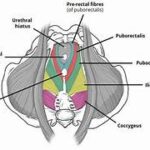Lumbar Disc Herniation Exercises
Exercises are an important part of treating lumbar disc herniation because they can help to improve movement, relieve pain, and strengthen surrounding muscles, ligaments, and tendons, which can help prevent recurrent herniations.
By strengthening the muscles in the body, especially those in the abdomen, back, and glutes, individuals can improve their overall posture and core strength, which can help to reduce the pressure on the lumbar disc and prevent future herniations.
In addition, exercises can also help to improve range of motion in the lower back, which can help to reduce the pain associated with a herniated disc.
Exercises can be customized to the specific needs and abilities of individuals, and a trained physiotherapist can provide guidance on the most appropriate exercises for each individual case.
These exercises are designed to help relieve pain, improve movement and stability, and strengthen surrounding muscles, ligaments and tendons.
Here are some exercises that you can do:
1. Cat-Cow Pose: Begin on hands and knees, with your hips over your knees and your shoulders over your wrists. As you exhale, drop your belly toward the floor, and curl your tailbone up toward the ceiling, as though you are making the shape of a cow with your spine. As you inhale, raise your head, and arch your back up like the shape of a cat. Repeat this movement for ten repetitions.
2. Bird Dog: Get on all fours, with your hands directly below your shoulders and your knees below your hips. As you inhale, lift one arm towards the ceiling while simultaneously lifting the opposite leg straight to the back. As you exhale, return to the starting position. Repeat this movement for ten repetitions on each side.
3. Side Plank: Lie on your left side, with your left elbow directly below your shoulder. Raise your hips so that your body makes a straight line from your head to your feet. Hold this position for ten long breaths. Repeat the exercise on the other side.
4. Knees-to-Chest: Laying on your back, lift your legs to bring your knees to your chest. Hold this position for ten long breaths. Repeat this movement for ten repetitions.
5. Child’s Pose: Start by kneeling on the floor, with your toes pointing back and your knees wide apart. Lower your tummy to the floor, while extending your arms forward. Hold this position for 30 seconds and repeat for two to three sets.
6. Cobra Position: Lie on your stomach, with your palms on the floor below your shoulders. Exhale and lift your chest off the floor, while keeping your buttocks and legs on the ground. Hold this position for ten long breaths.
Remember that these exercises should be done under the guidance of a trained physiotherapist or physician, who can ensure that you are doing them correctly, and that you are not putting unnecessary stress on your back.


